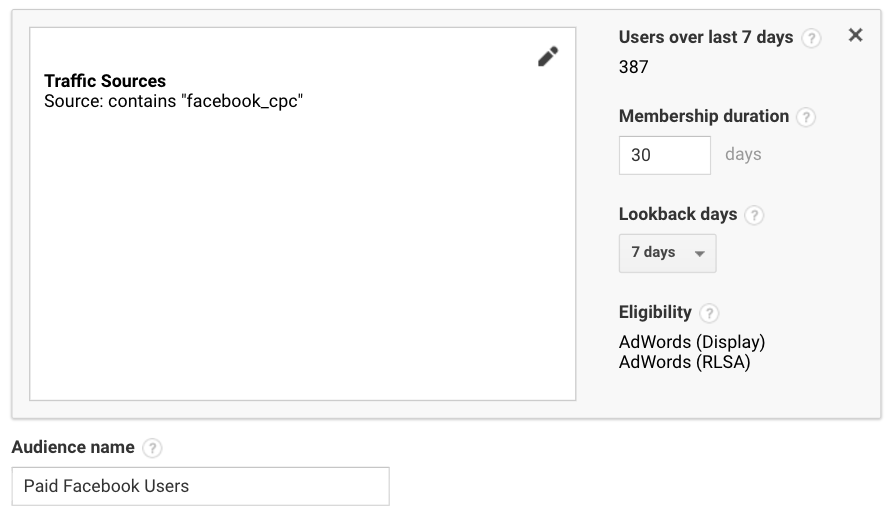
Many marketers are utilizing Facebook, Google Adwords, and Display Re-marketing to advertise to their target markets. What’s less common is integrating all of these different channels into one, cohesive campaign. Doing so will streamline and amplify the success of your marketing programs by simply mirroring your audience’s path to purchase. Marketers can work to create their own funnel of demand by utilizing Facebook and Google to reach new audiences, and then the Google Display Network and Facebook Pixels to re-target captive users.Here’s how the team at Screen Pilot has engineered similar campaigns on behalf of our clients:
Step 1:
Create an advertisement on Facebook. Using Facebook’s Ad Manager, you can build a campaign that targets any select audience, and drive them to the desired landing page. If you’re looking to build brand awareness, taking them to your homepage is a great start.Facebook offers a variety of targeting methods to reach your desired audience. Targeting geo-locations can get as granular as “zip code” and “distance from” a specific address, all the way to targeting language, household income, parental status, and more. Create an ad that speaks to the user you’re trying to reach.

Create an engaging Facebook advertisement that speaks directly to your target audience.
Step 2:
Create ads on the Google Display Network and target similar audiences as the ones used for Facebook. You’ll want to take into account geo-location, demographics, and user interests of your average consumer in order to market to an audience that will be interested in clicking on your ad. Coupled with Facebook ads, these will allow you to expose your brand to all types of web users wherever they may be researching.
Step 3:
In order to collect audience data from your Facebook and Google ads for retargeting purposes, you’ll need to develop remarketing lists in Google Analytics. Google Analytics provides statistics and analytical tools for monitoring web traffic, attribution, conversion metrics, and many other data points to enhance your marketing efforts and drill down your target market. Utilize Remarketing List for Search Ads (RLSA) and Display Network Remarketing from within Google Adwords. Here are a few audience list ideas to get you started:
- Users that come from Facebook/Social Networking Sites
- Users that click on your Facebook Ads
- Users that came from Facebook, spent at least 3 minutes on your site AND came back for a second visit
The possibilities for creating audience lists are endless and can tell you a considerable amount about the person on the other end of the computer, solely by their web surfing habits.

Step 4:
Begin integrating your separate search marketing and social media marketing campaigns into one. Now that you have audience lists created for users that came from Facebook and the Google Display Network, you can launch your remarketing efforts to them. If you have a special promotion or a limited time offer coming up, this would be a fantastic opportunity to allocate funds to this new, highly interested group of potential customers you’ve created.

Use your integrated search marketing and social media marketing audiences to target great offers to your most engaged audiences.
Our Results
By creating a very specific and engaged list of online users, we saw an average of 130% lower cost per click (CPC) and 200% higher click-through rate (CTR) on our display remarketing campaign. Additionally, we noticed an increase in users who searched our brand name after seeing our brand awareness ads.Through this experiment, we sought to determine whether search marketing and social media marketing could complement each other in driving results for our clients. Our results suggest that, in fact, these two channels are definitely better when used together. We’ve since begun integrating the social media and search marketing efforts across our entire portfolio, and we know we’ll continue to work within the funnels of demand those efforts have created.Give it a try for yourself, or let us know how we can help you get started seeing results immediately. We’d love to hear from you if you also find yourself achieving new conversions with integrated search and social media marketing.
Did you enjoy the read?
Get original hospitality industry insights delivered to your inbox. Sign up to receive Screen Pilot’s #TrendingNow Newsletter.






